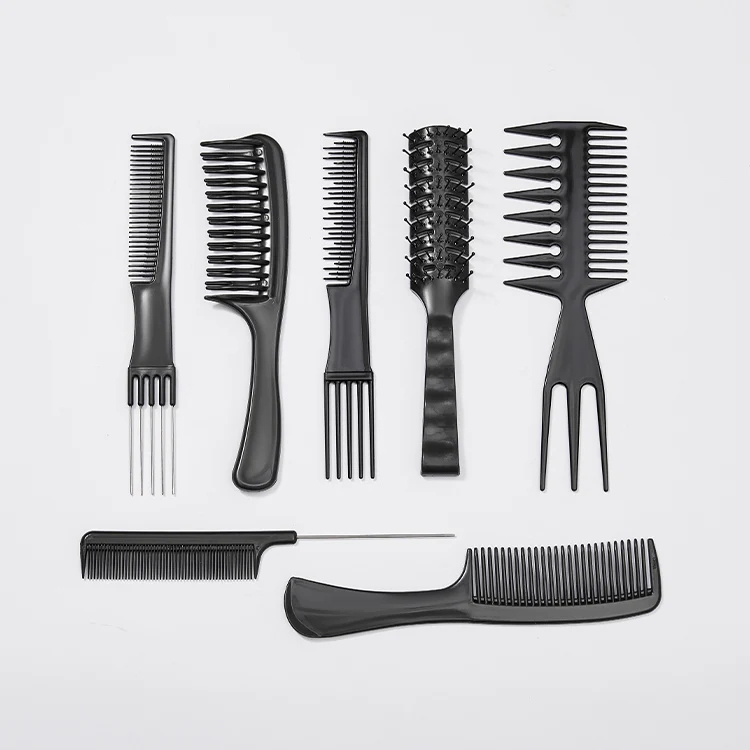8 Steps to Safely Remove a Lace Front Wig

Proper wig removal is essential for maintaining the health of your natural hair and scalp. Incorrect methods can lead to scalp issues, discomfort, and even traction alopecia. Following a step-by-step guide ensures that you avoid these risks and prolong the life of your lace front wigs. Berlinda Entsie emphasizes the importance of gentle techniques to prevent damage. Berlinda also highlights the need for patience during the process. Berlinda Entsie advises using appropriate tools and products for safe removal. Berlinda's expertise in how to put on a lace front wig for beginners, Luvmeforyou, provides valuable insights for beginners and experienced users alike.
Gather Your Tools and Products

Essential Tools
Adhesive Remover
Use an adhesive remover to break down the glue holding the lace front wig in place. Choose a product specifically designed for wigs to avoid irritation. Dampen a cotton ball with the remover and gently dab it on the lace where the glue is present.
Wide-Tooth Comb
A wide-tooth comb helps detangle the wig without causing damage. Use the comb to gently work through any knots or tangles. This ensures a smooth removal process.
Soft Cloth or Cotton Pads
Soft cloths or cotton pads are essential for wiping away adhesive residue. These items help keep the area clean and prevent skin irritation. Dampen them with adhesive remover for best results.
Recommended Products
Gentle Shampoo
A gentle shampoo cleanses the wig without stripping its natural oils. Look for shampoos formulated for wigs or delicate hair. This helps maintain the wig's quality and longevity.
Conditioner
Conditioner keeps the wig soft and manageable. Fill a basin with lukewarm water and add conditioner to soak the wig for about 10-15 minutes. Gently massage more conditioner to loosen any adhesives or glue.
Wig Stand or Mannequin Head
A wig stand or mannequin head provides a stable base for drying and styling the wig. Place the wig on the stand to air dry completely. Proper storage helps maintain the wig's shape and quality.
Prepare Your Work Area
Clean and Organized Space
Well-lit Area
Choose a well-lit area for wig removal. Good lighting helps you see the lace and adhesive clearly. This reduces the risk of damaging your natural hair or the wig.
Mirror for Visibility
Use a mirror to monitor the removal process. A mirror provides a clear view of your hairline and the wig edges. This ensures precise and careful removal.
Protect Your Clothing
Use a Towel or Cape
Drape a towel or cape over your shoulders. This protects your clothing from adhesive remover and other products. A towel or cape also catches any loose hairs or residue.
Loosen the Adhesive
Apply Adhesive Remover
Spray or Dab on Adhesive Remover
Use an adhesive remover to break down the glue holding the lace front wig in place. Choose a product specifically designed for wigs to avoid irritation. Dampen a cotton ball with the remover and gently dab it on the lace where the glue is present. Expert advice suggests following the manufacturer’s instructions for the best results.
Let it Sit for a Few Minutes
Allow the adhesive remover to sit for a few minutes. This gives the product time to penetrate and soften the glue. Patience during this step ensures a smoother removal process and reduces the risk of damage.
Gently Massage the Edges
Use Fingers to Loosen the Lace
Begin by using your fingers to gently massage the edges of the lace. This helps to further loosen the adhesive. Work slowly and carefully to avoid tearing the lace or pulling out your natural hair.
Avoid Pulling or Tugging
Avoid pulling or tugging on the lace. Forceful removal can cause damage to both the wig and your natural hair. Gentle techniques are essential for maintaining the integrity of the lace front wig.
Carefully Lift the Wig
Start from the Front
Slowly lift the lace from the forehead
Begin by gently lifting the lace from your forehead. Use your fingers to carefully separate the lace from your skin. Move slowly to avoid tearing the lace or pulling out your natural hair.
Work your way around the edges
Continue lifting the lace around the edges of your wig. Start at the temples and work toward the back of your head. If you encounter resistance, apply more adhesive remover and wait a few minutes before proceeding.
Use a Wide-Tooth Comb
Gently comb through any tangles
Use a wide-tooth comb to detangle the wig as you lift it. Start at the ends and work your way up to the roots. This helps prevent damage to the wig fibers and ensures a smooth removal process.
Ensure the wig lifts smoothly
Ensure the wig lifts smoothly by taking your time and being patient. If the wig sticks in some places, apply more adhesive remover and wait a bit longer. Avoid yanking or pulling on the wig to maintain its integrity and your natural hair's health.
Clean Residual Glue from Skin
Use a Soft Cloth or Cotton Pads
Dampen with Adhesive Remover
Dampen a soft cloth or cotton pad with adhesive remover. Select a product designed for wig adhesives to avoid skin irritation. Many people prefer alternatives like acetone for sensitive skin.
Wipe Away Any Glue Residue
Use the dampened cloth or pad to wipe away any glue residue. Move in gentle, circular motions to ensure thorough cleaning. Avoid scrubbing to prevent skin irritation.
Wash Your Face
Use a Gentle Cleanser
Wash your face with a gentle cleanser. Choose a product suitable for all skin types to maintain skin health. Avoid harsh soaps that can dry out the skin.
Pat Dry with a Soft Towel
Pat your face dry with a soft towel. Use a clean, dry towel to avoid transferring any remaining adhesive. Patting instead of rubbing helps prevent skin irritation.
Clean Residual Glue from the Wig
Apply Adhesive Remover to the Lace
Let it sit for a few minutes
Apply the adhesive remover to the lace area. Allow the solution to sit for a few minutes. This step helps to soften the glue, making it easier to remove.
Gently wipe away glue
Use a soft cloth or cotton pad to gently wipe away the softened glue. Move in a circular motion to ensure thorough cleaning. Avoid scrubbing to prevent damaging the lace.
Wash the Wig
Use gentle shampoo and conditioner
Fill a basin with lukewarm water. Add a small amount of gentle shampoo designed for wigs. Submerge the wig and gently swish it around. Rinse thoroughly to remove all shampoo. Follow up with a conditioner to keep the wig soft and manageable.
Rinse thoroughly and pat dry
Rinse the wig under cool running water until all product residue is gone. Pat the wig dry with a soft towel. Avoid wringing or twisting the wig to maintain its shape and quality. Place the wig on a stand to air dry completely.
Dry and Store the Wig
Air Dry the Wig
Place on a Wig Stand or Mannequin Head
Place your wig on a wig stand or mannequin head. This step ensures that the wig maintains its shape while drying. A stable base prevents the wig from tangling or losing its form.
Allow to Dry Completely
Allow the wig to dry completely. Air drying preserves the integrity of the wig fibers. Avoid using heat sources like hair dryers, which can damage the wig. Patience during this step ensures the wig remains in excellent condition.
Proper Storage
Store in a Cool, Dry Place
Store your wig in a cool, dry place. Avoid areas with direct sunlight or excessive heat. These conditions can cause the wig fibers to deteriorate. A well-ventilated space helps maintain the wig's quality.
Use a Wig Cap to Maintain Shape
Use a wig cap to maintain the wig's shape. A wig cap prevents the wig from becoming misshapen during storage. Ensure the wig cap fits snugly but not too tight. Proper storage techniques prolong the life of your wig.
Properly removing a lace front wig is crucial for maintaining the health of your natural hair and the wig itself. Following these steps ensures you avoid damage and prolong the life of your lace front wig. Always use gentle techniques and the right products to achieve the best results. Remember, patience is key. Regularly clean and condition both your wig and natural hair. Proper storage also helps maintain the wig's shape and quality. For more tips and tricks, explore our community at Luvmeforyou.






















